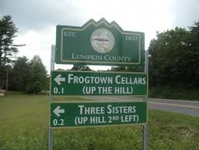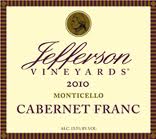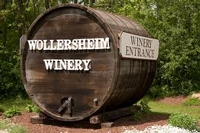You may have heard of the Judgment of Paris, the 1976 wine tasting that pitted handpicked wines from California against many of the finest and most expensive wines produced in France. In a shocking development, a panel of French wine judges preferred the California wines over those hallowed wines from France.
 A cabernet sauvignon from Stag’s Leap Wine Cellars and a chardonnay from Chateau Montelena, both wineries of the Napa Valley, prevailed over the premier cru and grand cru wines from Bordeaux and Burgundy. The wines had been tasted blind, with the judges having no knowledge of each wine’s origin or pedigree.
A cabernet sauvignon from Stag’s Leap Wine Cellars and a chardonnay from Chateau Montelena, both wineries of the Napa Valley, prevailed over the premier cru and grand cru wines from Bordeaux and Burgundy. The wines had been tasted blind, with the judges having no knowledge of each wine’s origin or pedigree.
The universe of fine wine appreciation was stunned, and the results propelled the Napa Valley and the California wine industry to the position of unparalleled prestige it enjoys in the U.S. to this day.
More recently, we have the Judgment of Princeton, a blind tasting earlier this month modeled closely after the infamous 1976 tasting in Paris. At the Judgment of Princeton, the likes of Chateau Mouton Rothschild (Bordeaux) and Joseph Drouhin Clos des Mouches (Burgundy) were up against red and white wines from New Jersey.
The French wines prevailed at Princeton, but the vote was close. Eyebrows were raised, particularly at the erudite magazine The New Yorker, which headlined its coverage, "Does all wine taste the same?"
 For what it’s worth, I’m hardly surprised that New Jersey’s Heritage BDX and Unionville Single Vineyard came close to knocking off the French. And not because I think the tastings or the tasters may have been flawed, or that all wines taste the same. What we are witnessing, I believe, is the emergence of very fine American wine in places we never would have dreamed in the not too distant past.
For what it’s worth, I’m hardly surprised that New Jersey’s Heritage BDX and Unionville Single Vineyard came close to knocking off the French. And not because I think the tastings or the tasters may have been flawed, or that all wines taste the same. What we are witnessing, I believe, is the emergence of very fine American wine in places we never would have dreamed in the not too distant past.
I admit I am a recent convert to that position. I once was of the opinion that those intrepid souls making wine in the hinterlands were either quixotic figures hopelessly tilting at windmills or foolish cranks attempting to prove the unprovable.
Then I got religion. Through my position as director of several major wine competitions, I had a chance to taste the remarkable wines from Frogtown Cellars, of Lumpkin County, Ga. They are serious wines made from grapes that historically did well in France. Georgia to me meant sweltering heat and humidity in summer. I couldn’t imagine fine wine from such a place.
Frogtown started entering the wine competitions and consistently won medals in blind tastings. I spoke to the winemaker, Craig Kritzer, and learned that vineyards are thriving in the foothills of the Appalachian mountains, that it’s not as warm and muggy as, say, Atlanta or Savannah, and he truly believes his wines can stand up to the best in the world.
Now when Frogtown wins another impressive medal, I merely yawn. And smile. Kritzer is a serious winemaker and a true visionary.
Then there is Andy Reagan, the winemaker and general manager at Jefferson Vineyards in Monticello, Va. Every year Reagan sends his top wines — a cabernet Franc, a red Bordeaux-style blend and a viognier — to the various competitions I run, and every year they reap important awards for Virginia wine.
What’s more, one of his neighbors — Barboursville Vineyards — is a worthy rival in the cabernet franc category, and also produces perhaps the finest nebbiolo (the grape of Barolo and Barbaresco) in North America.
 From the Midwest, I can’t be anything but impressed with the St. James Winery of St. James, Mo. Using French hybrid grapes such as seyval, St. James produces impeccable wines and routinely racks up a dozen or more medals at each competition it enters. And this year at the San Diego International Wine Competition, the Wollersheim Winery of Prairie du Sac, Wis., had six Platinum-award wines and was named winery of the year.
From the Midwest, I can’t be anything but impressed with the St. James Winery of St. James, Mo. Using French hybrid grapes such as seyval, St. James produces impeccable wines and routinely racks up a dozen or more medals at each competition it enters. And this year at the San Diego International Wine Competition, the Wollersheim Winery of Prairie du Sac, Wis., had six Platinum-award wines and was named winery of the year.
Over the years, I’ve also tasted gorgeous wines from South Dakota, Colorado, New York, Pennsylvania, Rhode Island, North Carolina, Texas and Michigan — even New Jersey.
The fine-wine map has changed. Maybe you can’t afford the best French wine money can buy. No worries. Just look around you. Made in the U.S.A. isn’t such a bad thing in the universe of good wine.
8
